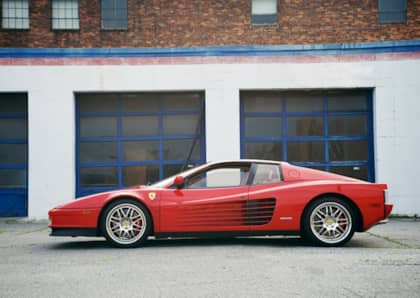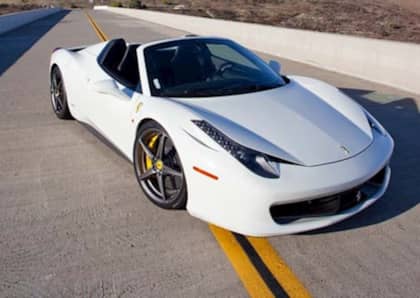Buying A Cheap Exotic Car: Is It Ever Worth The Pain?
We've all seen them lurking in online classifieds: the ultra-cheap exotic car, a vehicle at least ten years removed from its glory days and now priced at a mere fraction of its original, eye-watering window sticker. Whether it's a Lotus Esprit on Facebook Marketplace or a Maserati Coupe on Autotrader, the lure of a six-figure sports car or luxury machine that's now fallen into the low-teens/mid-twenties sweet spot can be difficult to resist.

For every bargain-priced used exotic car out there, however, there's almost always a cautionary tale of woe about a buyer who got in at the low end of the depreciation curve and then quickly discovered that the purchase price was just the cost of entry to what ended up being a very expensive ownership experience.

Is a cheap exotic automobile ever worth the potential financial pain and mechanical frustration? And is there anything you can do to avoid the potential nightmares involved in maintaining an aging high-end automobile?
High Prices, High Maintenance
Why are exotic cars so expensive to own? The harsh reality is that a vehicle that sold for more than $100,000 when it was new retains the same intensive maintenance schedule as a used car. Although its market value may have drastically dropped, the cost of the parts under the hood, on the chassis, and in the cabin remain the same as they did the day it was new—and so does the price of the specialized labor that's often required for a repair.

Sometimes, the upcharges are related to engineering decisions that were restricted by the technical capabilities of their eras. The original V12-powered BMW 750i sedan and 850i coupe are notorious for having double the number of many engine components—including ECUs—as the 12-cylinder design was derived from pairing two straight six motors together. The one-piece clamshell hood found on first and second generation Dodge Vipers, a wonder in its time, fetches tens of thousands of dollars to replace if you happen to put a crack in the leading edge of the bumper.

Older Mercedes-Benz fuel injection systems, such as the Bosch K-Jetronic, needed giant fuel distributors that sat on top of the motor, parts that are now outmoded and which can cost the same amount as a new car. Then there's every old school exotic out there with a hydraulic or pneumatic suspension system, whose Byzantine maze of tubes and wiring matched with extensive fittings and expensive shocks can feel like a cruel joke is being played on your bank account every time the vehicle gets caught kneeling in your driveway.
Labor Blues
Expensive parts are only one of the factors that push up the running costs of a used exotic car. Given that the original owners of these vehicles typically only kept them in the garage for the duration of the original warranty period, it didn't matter much if regular servicing involved the elaborate and time-consuming, disassembly and re-assembly of numerous components. When you're paying out of pocket, it's a very different story.

A perfect example of this are '80s and '90s Ferrari models like the Testarossa and the 355. These beautifully-styled sports cars need the engine to come out completely to take care of some regularly-scheduled maintenance, such as timing belt replacement (which must be done every 5 years or 30,000 miles). This requires a minimum of 10 hours of labor from technicians who are experienced with the brand, an endeavor that can quickly run into the many thousands of dollars.

The burden of Ferrari maintenance was such that when the 355 was replaced by the 360, the automaker did away with this onerous service method. But Ferrari is only the tip of the iceberg for cars that feature engine components that are not for easy replacement: even some modern cars like the V8-powered Audi RS6 and RS4, for example, also require a full engine-out timing belt guide replacement service.
Good Luck Finding Parts
Expensive parts and pricey service are one thing, but both of those costs assume you can actually find the components you need to repair your vehicle. Unfortunately, due to a number of factors it can sometimes be difficult, if not impossible, to locate specific parts for exotic cars.

Some of this has to do with their low production numbers, as inventory for replacement parts was likely already slim when the automobiles were new. Depending on how far back you go, any remaining replacement parts might now be the property of specialty providers that have either hoarded what's left, or, if you're lucky, are making reproductions (the Viper Club of America did both when that model was sunsetted).

Sticking with the Viper theme, running changes from one model year to the next during early production can also result in vehicles that are essentially orphans from a support perspective. Early 1992 Dodge Viper R/Ts feature many differences compared to cars built just two years later, and that can make finding replacement components exceedingly difficult.

Finally, even if you do find the part you need, where it's located in the world can become an additional pain point. For imported exotics, getting parts shipped from Germany, Italy, or England requires patience and a certain level of cunning when dealing with courier companies and customs officials.
Do Your Own Work Or Prepare To Feel The Pinch
Given all of the above, how to answer the question of whether buying a cheap exotic car is worth the painful ownership costs and maintenance hassles that go with it? If you're going to be handing over a credit card on a near-monthly basis to a shop that's already dealing with a dozen other owners in similar circumstances, you might find yourself forking over a lot of cash to only occasionally drive your car.

In other cases, if you're capable with a wrench, don't mind immersing yourself in the arcane technical details of the vehicle's shop manual, and have access to a strong community of like-minded owners online, you might be able to come out relatively even (as long as you have a healthy parts budget, of course).

Doing your research in advance to determine what you might be up against when owning a specific car can also go a long way towards helping you avoid any unexpected pitfalls. Go in with your eyes open, buy the best example you can afford at the outset, and you might be not have to take out a second mortgage to drive yesterday's state-of-the-art automobile.











